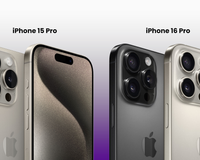Apple are once again warning users that older iPhone models will become obsolete in the near future, making them nearly impossible to maintain or even repair. This is part of the typical push to move people to newer phones.
Thanks to Apple constantly updating their gadgets and technologies, it becomes inevitable that older and outdated iPhone models become obsolete. This year will see the release of the iPhone 14, the follow up to the iPhone 13 which was underwhelming indifferent to the previous iPhone 12. More and more consumers have been opting for refurbished devices which are up to 40% cheaper such as this refurbished iPhone 13 or this iPhone 12 Pro.
Latest figures from Statista show that they’ve had the highest market share of any phone manufacturer in the last quarter of 2021, at 24%.
Apple will no longer sell some older models and will no longer provide repairs for them. This is because they are expected to slow down by this time, and it is usually quicker to upgrade to a newer model with more features.
Apple's iPhone has been a major success since its debut in 2007, and according to Statista, they had the biggest market share of any phone maker in the fourth quarter of 2021.
When the late Steve Jobs unveiled the first iPhone, he revolutionised the face of the mobile phone business.

How does apple make phones obsolete?
Put simply, apple stops issuing software updates for older models and no longer supports first-party repair either directly or through its network of certified repair partners.
What are the latest models to become obsolete?
According to Apple, iPhone models as late as the iPhone 6 Plus will become obsolete. These are also known as 'vintage iPhones,' as they indicate that "Apple stopped selling them more than five and fewer than seven years ago."
iPhones set to become obsolete are as follows:
iPhone 4 (8GB)
iPhone 4S
iPhone 5
iPhone 5C
iPhone 6 Plus
Apple advised: "Owners of iPhone, iPad, iPod, Mac or Apple TV products may obtain a service and parts from Apple service providers, including Apple Retail Stores and Independent Repair Providers, for a minimum of 5 years from when Apple last distributed the product for sale.
"Service and parts may be obtained for longer, as required by law, or for up to 7 years, subject to parts availability."

What can you do?
Unfortunately, not a lot. This means inevitably having to upgrade. This being said if your running an older ‘vintage model’ such as the iPhone 6 chances are you’re already holding on. Typically, devices this old do start experiencing ware and take or just general performance issues as the apps and software need more hardware power to operate. Kind of like trying to run new software on an old PC, it just doesn’t work well. In the majority of cases, its battery issues unless you’ve upgraded your battery. Even with older phones with new batteries, the performance demand from the apps and software can deplete the battery in a matter of hours.
If you’re struggling to figure out what’s right for you, read our buyers guide here. If battery life is your main concern, we’ve ranked the battery Performance of all the latest models here.

![The Best iPhones for battery life ranked [2025]](http://reboxed.co/cdn/shop/articles/IPHONE-BATTERY_e2de6230-b1d2-4348-ac33-e47d1e267bdd_100x80_crop_center@2x.jpg?v=1738489925)






